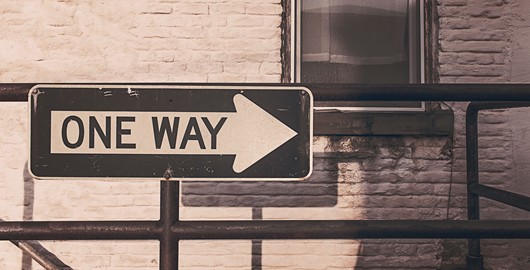
Last weekend I did a 4-mile race in Central Park and got a new PR (Personal Record). I did it in 30:29 min (so 7:38/ mile average) — I was really happy with that result. What made me even happier was that a year ago I did the same race in 33:10, I was excited to see such improvement.
I think the reason I love running is because there is always measurable progress. What I find really interesting is the training process. In training, the goal is to push yourself as hard as possible and to run faster than you would during the race – and add challenges in like hills or intervals. Then when it’s time to race, the race actually seems not as hard as the training sessions.
In one of the articles in my weekly UX newsletter this week, there’s a great quote that I love, “good UX doesn’t take shortcuts”.
A big question I get from designers is concerning how long it will take until they really feel like they know how to design. So many people seem to be looking for the one book, course, or guru to guide them. I believe this is because of two factors. First, the fast-growing job market for User Experience designers. Second, there are many online and in-person UX programs to suit any timeline and budget for anyone who wants to learn about User Experience design.
As I wrote in my article, The UX of Learning UX is Broken, it is not enough to just take a UX program. You have to consider a program as either a starting point or a way to learn more about UX if you simply want to become more versed in it to help you interact more efficiently with the UX team in your company.
However, please don’t think that simply taking a course is going to land you a high paying job in a matter of months. That’s called a shortcut.
There are no shortcuts to learning. What it takes is practice … and lots of it. As far as I know, you can’t just skip the many years of residency required to become a doctor. Residency exists so that you have a chance to practice what you learned while at college and medical school.
In the same way, becoming a User Experience Designer is an ongoing process of honing your design skills, people skills, and business skills. I never stop learning. The main reason for this is that our field is constantly changing and evolving. New technology causes us to re-think how people interact with digital products. Consider that the iPhone was only released in 2007, less than 10 years ago. Also in that time, we’ve seen growth in tablets and wearables (especially in the fitness space). Not only have I had to understand how to design for those devices, but I’ve also had to understand how people use those devices and in what context.
So how can you get more practice? I know it’s tricky … how do you get experience if no one will hire you. Well, I think if you really want to become great at User Experience then you need to take matters into your own hands and just start solving the problems around you. When you’re using an app and spot a problem, take a few minutes to solve it. Bonus points if you take the time to write about how you solve the problem such as I’ve done in my Everyday UX series a few times.
If you want to have more opportunity to practice doing UX then pay attention to the new “Trigger Questions” section at the bottom of my weekly UX newsletter. Each week I’ll include a few questions to get you and your team thinking and talking more. Sometimes it will just be questions and other times there might be actual design exercises.
If you want some feedback from me about how you’ve approached solving design problems around you, then feel free to leave a comment below or share a link to a post you’ve written to document your process.